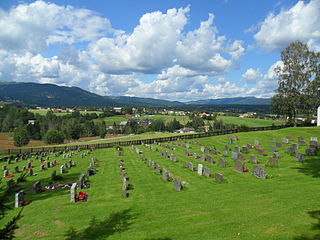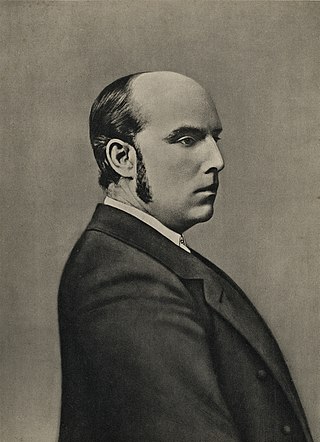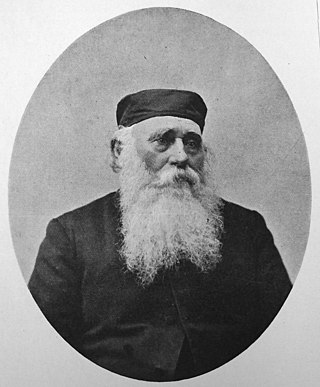Related Research Articles

Bø is a former municipality in Telemark county, Norway. It was part of the traditional region of Midt-Telemark, but was historically regarded as part of Grenland. The 263-square-kilometre (102 sq mi) municipality existed from 1838 until its dissolution in 2020. The area is now part of Midt-Telemark Municipality. The administrative centre was the village of Bø i Telemark. Other villages in the municipality included Folkestad and Nordbøåsane.

Skien is a municipality in Telemark county, Norway. It is located in the traditional district of Grenland, although historically it belonged to Grenmar/Skiensfjorden, while Grenland referred the Norsjø area and Bø. The administrative centre of the municipality is the city of Skien, which is also the administrative centre of the whole county. Some of the notable villages in the municipality include Åfoss, Hoppestad, Klovholt, Luksefjell, Melum, Kilebygda, Skotfoss, Sneltvedt, and Valebø.

Olav Aukrust was a Norwegian poet and teacher. He popularized the use of Nynorsk as a literary language and is most commonly associated with his poem Himmelvarden (1916).

Wollert Konow was the 12th prime minister of Norway from 1910 to 1912. He was the leader of a coalition cabinet. Konow's time as Prime Minister saw the extension of accident insurance to seamen in 1911.

Anton Christian Bang was a Norwegian theologian, historian and politician for the Conservative Party of Norway. Bang was one of the more prominent figures within the Church of Norway in the decades around 1900. He served as a professor of church history at the Royal Frederick University from 1885 onward, as Minister of Education and Church Affairs from 1893 to 1895, and as Bishop of Oslo from 1896 to 1912.

Paul Olaf Bodding was a Norwegian missionary, linguist and folklorist.

Fåberg is a former municipality in the old Oppland county, Norway. The 478-square-kilometre (185 sq mi) municipality existed from 1838 until 1964. Now, it is part of Lillehammer Municipality in Innlandet county. The administrative centre was the village of Fåberg.

Lars Olsen Skrefsrud was a Norwegian Lutheran missionary and language researcher in India.
The World Mission Prayer League (WMPL) is a pan-Lutheran fellowship committed to Christian prayer as a working method of mission.

Elias Gottlieb Oscar Egede Nissen was a Norwegian physician, newspaper editor and politician. He belonged to the Norwegian Labour Party from 1889 to his death, and was both party leader, party secretary as well as editor of the party organ Social-Demokraten for a period. He also made his mark as a campaigner for temperance and better health conditions. He was also chairman of the Norwegian Santal Mission.
Events in the year 1804 in Norway.

Olav Hodne was a Norwegian humanitarian and missionary, affiliated with the Norwegian Santal Mission.
Parley Birger Eugen Gulbrandsen was a Norwegian missionary to China affiliated with the Norwegian Evangelical Mission (NEM) which belonged to the Pentecostal movement. He was the brother of Henry Gulbrandsen, who was also a missionary to China.
Otto Torvik was a Norwegian missionary in Xinjiang and in India. He founded the Norwegian Missionary Muhammad Mission in 1940. Today, the name is changed to Christian Muslim Mission.

Hans Peter Boerresen was a Danish missionary to India. He and Norwegian missionary Lars Olsen Skrefsrud were the founders of Northern Evangelical Lutheran Church—centered in North India - Bihar, Assam, and Bengal - extending into Nepal and Bhutan.

Bernhard Cathrinus Pauss was a Norwegian theologian, educator, author and humanitarian and missionary leader, who was a major figure in girls' education in Norway in his lifetime.

Santalen was a magazine published by the Norwegian Santal Mission from 1883 to 2001. The journal was founded and edited by Bernhard Pauss, who was also the chairman of the Norwegian Santal Mission's central committee from 1887 to 1907. Following his death his widow Henriette Pauss became editor. The journal had a circulation of around 5,000 in the 1880s and 14,000 in 1977. In 2001 the Norwegian Santal Mission merged to become part of Normisjon, and the publication was succeeded by Agenda 3:16.

Timotheas Hembrom was an ordained Minister of the Church of North India and an Old Testament Scholar who taught at the Bishop's College, Kolkata, affiliated to the nation's first University, the Senate of Serampore College (University). As a Biblical scholar, Hembrom was a member of the scholarly Society for Biblical Studies in India, with members from the Protestant, Orthodox, Catholic and Charismatic Church societies. He researched on Santali creation traditions and his work was first published in 1996 was simultaneously reviewed in the Indian Journal of Theology and the Journal of Hindu-Christian Studies.
Johannes Thoft Krogh was the Registrar of the nation's first University, the Senate of Serampore College (University) who was in office from 1975 through 1978.

Pauspur is a village in the state of Assam in India, located to the south of the Mornai Tea Estate within Kokrajhar district. It had its own Lutheran congregation and church, Pauspur Church. A small church was built 1919–1920 and replaced by a larger church in 1939. Pauspur Church was closed in 1951, as religious services were moved to a new church in Dingdinga.
References
- ↑ Den norske Santalmisjon, Store Norske Leksikon
- ↑ Johan Nyhagen and Olav Hodne: Santalmisjonens historie : med særlig henblikk på utviklingen i India og Norge 1867–1967, 1967